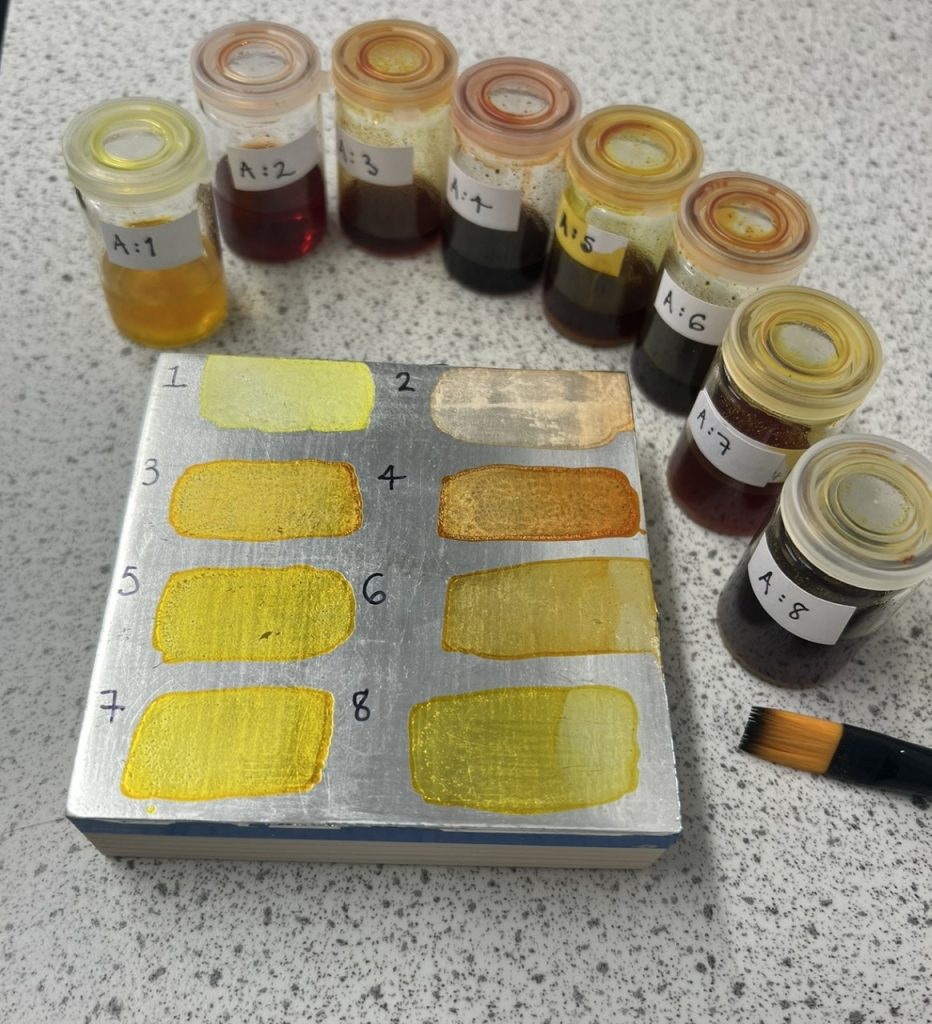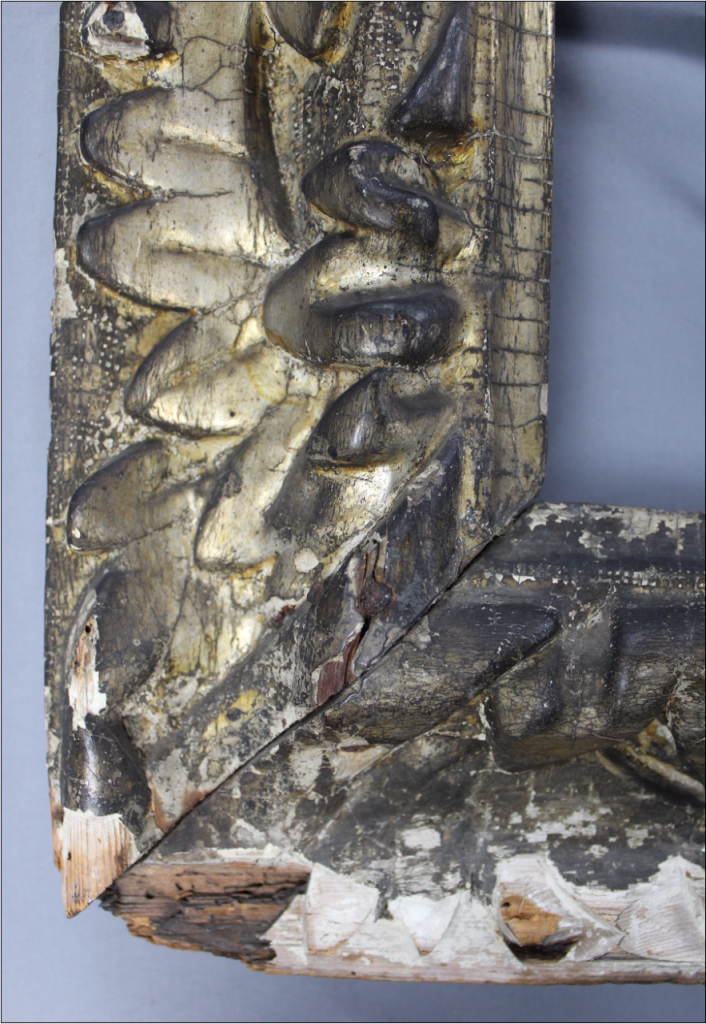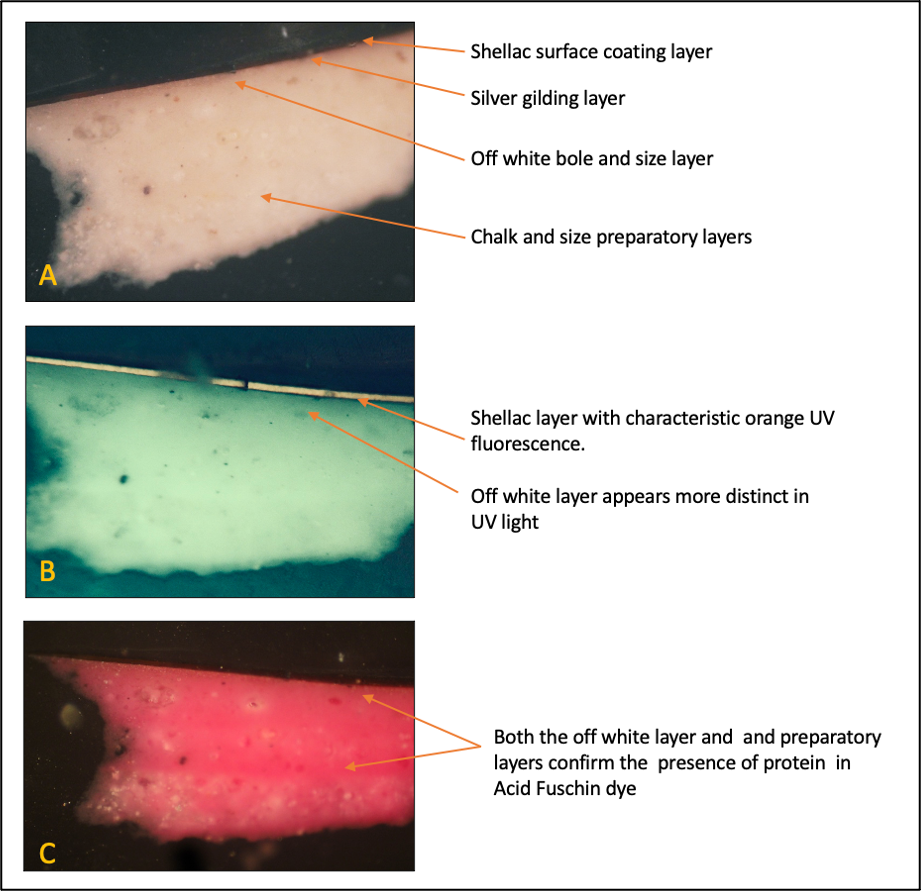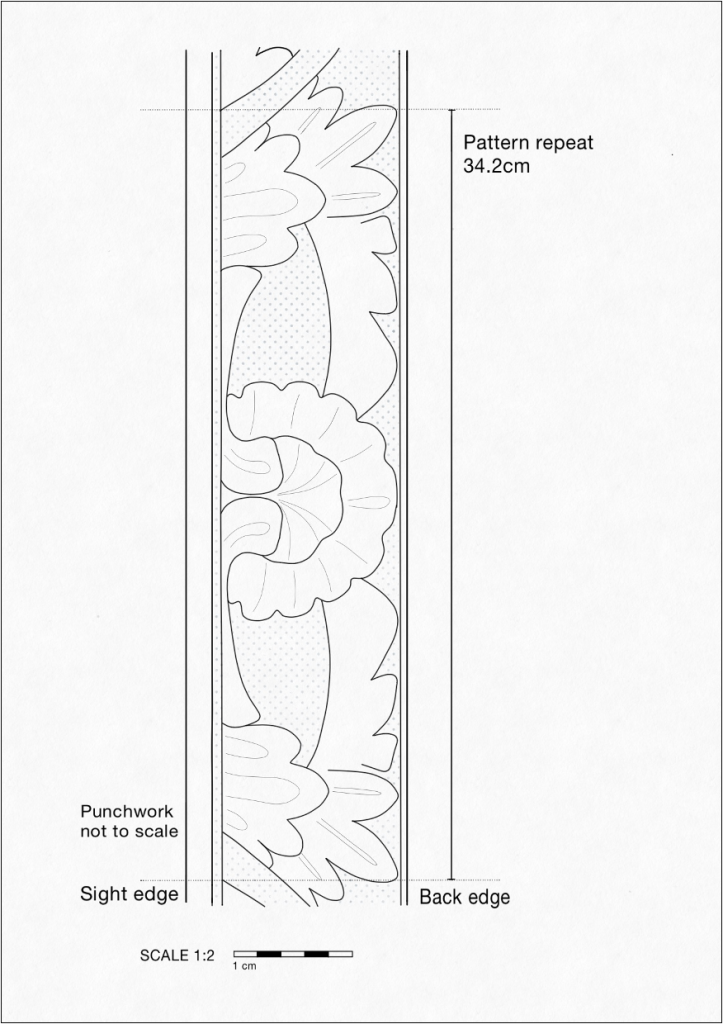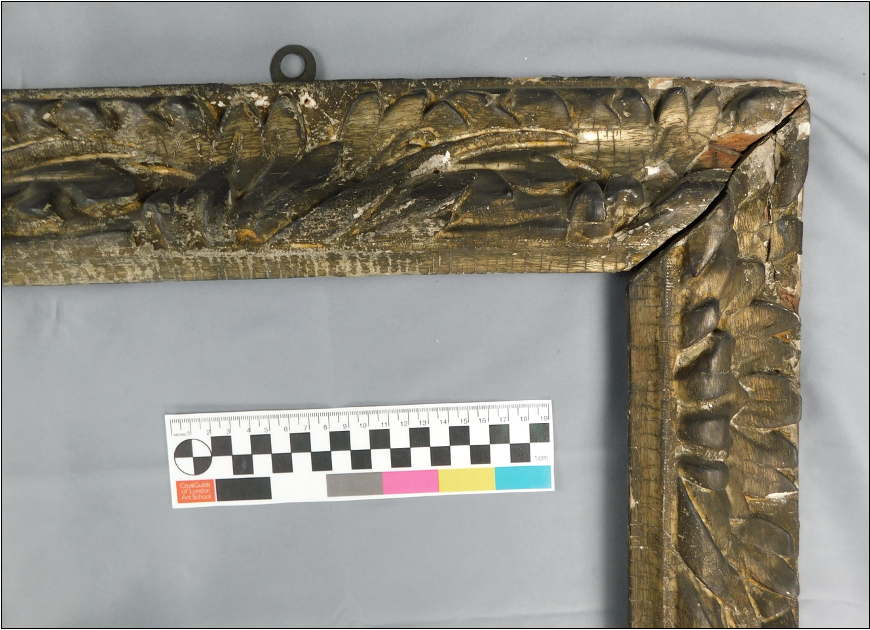
MA Conservation student, Charlotte Jones, tells us about her project working on a mecca silver gilded picture frame, using both current and historic techniques.
I’m studying part-time for an MA in Conservation Studies, whilst also working part-time as a Gilder on projects such as the recent restoration of the Albert Memorial, and the first phase of the gilding renovation at The National Gallery. It was studying for my GradDip at CGLAS in 2021/22 that led to these career opportunities. The mix of craft and artisan skills taught in the context of conservation really inspired me with a love of gilding, which in turn opened doors for me to work on these interesting projects.
I have chosen to specialise in the same field for my MA. I’m working on an English carved ‘mecca’ silver gilded picture frame, from c.1660, loaned by the Thomas Plume Library. The frame has been on display, framing a portrait of Archbishop Laud after Van Dyke, of around the same date as the frame; the frame is thought to be original to the painting. The frame is a rare example of a 17th century frame surviving with its apparent original decorative gilded surface. Mecca silver gilding, is a historical gilding technique where a transparent golden yellow-coloured coating is applied to water-gilded silver leaf, on objects such as frames, furniture, paintings, polychrome sculpture and interior decoration.
Silver gilding of objects was a particularly fashionable style of the latter half of the 17th century in England. However, as fashions changed in the early 18th century, and the silver inevitably tarnished, many such objects were subsequently regilded in gold, and the identification of the original silver surface often found only during in-depth analysis. Objects such as this Plume frame are extremely rare, even more so in original condition, which makes it a historically significant, interesting and culturally valuable object. The mecca varnishing technique is an intrinsic part of such an object, and a conservation concern to understand and correctly preserve this fragile layer, which is specific to a particular moment in British history.
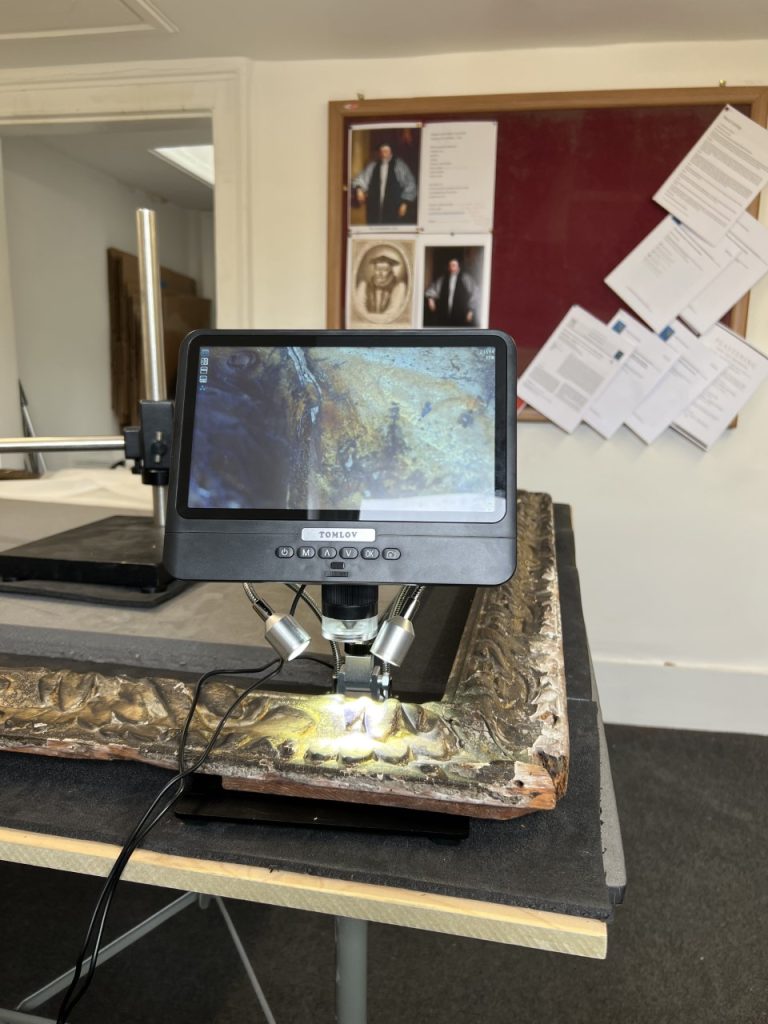
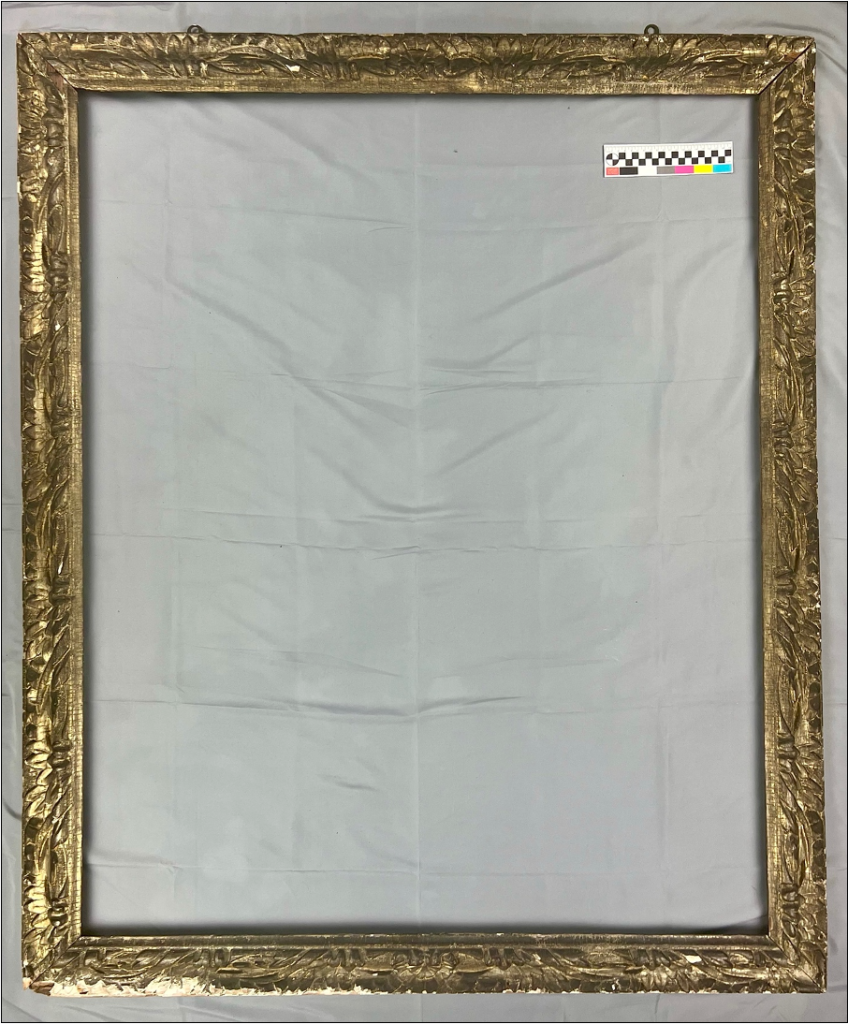
The purpose of the mecca varnish is both to imitate gold – which was, and still is, much more expensive than silver – while also providing a protective layer preventing silver tarnish. The alteration of the silver metal by atmospheric corrosion in mecca objects is mainly related to the conservation state of the coatings. The mecca technique can be very successful, so much so that in some cases the protection of the silver leaf may hinder identification of the technique, and objects can be misrepresented as gold leaf.
Using techniques such as microscopy, UV examination, cross-sectional analysis, microchemical testing, and FTIR, I have been able to establish interesting and unusual information about the materials and techniques used in the making of the frame and its original gilding scheme. This information is then being cross checked with contemporary sources from the 17th century, which give information on recipes and techniques used by artisans of the time, such as William Salmon’s Polygraphice of 1678 and Stalker & Parker’s Treatise of Japanning and Varnishing of 1688. I will be trialling some of these specific 17th century water-gilding techniques later this term.
I have recently started the practical treatment of the frame, carefully and lightly cleaning hundreds of years of dirt and grime to lift the appearance of the gilding. Next will be the consolidation of the fragile gilding scheme, and structural repair.
Charlotte Jones | Instagram
Find out more about our MA Conservation Course at one of our upcoming Open Days.
